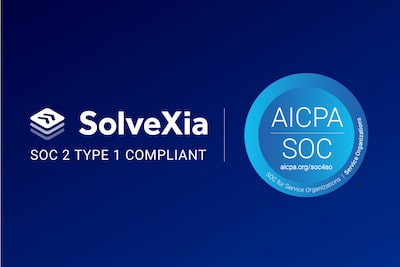Preparing for APRA Connect

The Australian Prudential Regulation Authority (APRA) has announced that it will be rolling out its new portal, APRA Connect, from September 2021 with testing commencing in June 2021.
This new portal is designed to enable APRA to enhance its supervisory capabilities by collecting data from all member organisations at a more granular level. It is also designed to make it easier for these organisations to submit their data in the longer term.
APRA Connect will replace current methods of data submission, including the current software tool used by most companies called D2A. However, those directly and indirectly responsible for the submission of data to APRA (including boards, CEOs, CFOs and Regulatory Managers) should be aware of a number of changes.
Table of Contents
1. What is changing and what impact will this have?
3. What else do I need to consider?
What is changing and what impact will this have?
Firstly, not all organisations currently use D2A to submit their data to APRA. When APRA Connect goes live, these organisations will no longer be able to submit data by email, mail or fax. It will only be possible to submit returns by entering information into screens or electronically in files in certain formats (XML or XBRL).
Secondly, for many organisations that do currently use D2A, the data that is submitted is copied and pasted manually from spreadsheets into the various D2A forms. Whilst D2A allowed users to copy and paste blocks of data (i.e. multiple numbers or text) at a time, with APRA Connect this will not be possible. APRA Connect will only allow you to paste one item (cell) at a time into its input screens. Clearly this will make the task far more time consuming and, in particular, much more prone to error.
Finally, APRA has indicated that the volume of information they will require from organisations falling under their remit is likely to increase. Some of the newer forms provided by APRA will require more than 10,000 rows of data (each row containing multiple numbers) within a single form. Clearly it will no longer be feasible to enter such volumes of data into forms manually, one number at a time.

How can this be addressed?
The solution to these challenges can be broken into two main categories:
1. Collecting the data; and
2. Converting and submitting the data.
1. Collecting the data
The data submitted in the forms will need to be collected from many sources including company reports, the General Ledger (GL), administration systems, third party administrators, etc. Organisations that currently fall under APRA’s remit will already be collecting this data, possibly by using spreadsheets populated via processes that are partly automated and partly manual (e.g. re-keying numbers or copying and pasting them).
Numbers need to be aggregated, cross-checked and compared to previous periods. They also need to be reviewed and approved by one or more staff members. Collectively, these manual steps may take days or weeks of effort to complete.
If the data collection process in your organisation has been largely automated and has been proven to be reliable, then this aspect of preparation for the move to APRA Connect might be relatively straight forward. However, when considering the suitability of your current data collection process, it is important to factor in the ability to scale up and satisfy APRA’s forthcoming demand for greater volumes of data. Additionally, you should query whether your process provides sufficient audit and tracking capabilities to satisfy the inevitable questions from APRA, auditors and management.
If the current process is not currently adequate or is not likely to be adaptable enough to meet audit requirements and evolving business and APRA demands, it will be necessary to automate the sourcing, combining, aggregation and checking of the data along with the human oversight and approvals necessary to provide quality data. This will require internal IT development projects or the use of third party tools designed for these tasks.
2. Converting and submitting the data
Unless your current processes or third party tools can convert the data that has been collected and prepared as described above, you will need a method to convert your data into the correct XML or XBRL format prescribed by APRA for each form. There are third party tools or online services that meet this need and some superannuation fund administration systems can automatically produce the XBRL form data though you will need to check that all forms are covered.
If you do not already have a tool that does the conversion, you will probably need to subscribe to one that provides this service. Most tools are provided on a Software-as-a-Service basis requiring a log in to a portal hosted by the provider. Some can be installed on-premises though this is likely to be a more expensive option. These will typically take Excel versions of the forms (in a pre-set format) as input and will then convert the forms to XBRL format.
Some providers (including Solvexia) offer a combined solution in which you can gather the data as described in 1. above, check it, store it, get it reviewed and approved and then submit it to APRA. An integrated approach offers superior audit and control capabilities.

What else do I need to consider?
There are other aspects to consider when looking for solutions to meet APRA Connect requirements. These include:
- The ease with which tools can collect data, e.g. connect directly to source systems, read a variety of file formats (e.g. Excel, fixed text), collect data from external sources (e.g. fund administrators), or simply via file uploads.
- The track record of solution providers, especially around support and security.
- The ability to use the solution and the data for other purposes such as reconciliation, management reporting, analytics, process automation, etc.
- Data storage, handling, backup and disaster recovery capabilities of the service or how these will be handled if hosted in-house.
- The ability to support the customisations needed for your firms reporting entities and the associated workflows (for example if the reporting responsibility is spread across different teams).
- The state of your current processes used in conjunction with D2A - are these very manual with data copied by staff members to/from spreadsheets?
Whilst the new APRA Connect portal may present a few challenges, it also offers opportunities beyond satisfying regulatory demands. These are the opportunity to automate mechanical data gathering and reporting processes, thereby freeing up skilled staff to perform other important work, the opportunity to provide useful and consistent analytics and reports to the business and the opportunity to reduce risk and key person dependency.
Please get in touch. We would love to receive your feedback.
FAQ
Intelligent reconciliation solution
Intelligent rebate management solution
Intelligent financial automation solution
Intelligent Financial Automation Solution
Intelligent financial automation solution
Intelligent financial automation solution
Intelligent financial automation solution
Intelligent financial automation solution
Intelligent regulatory reporting solution
Free up time and reduce errors
Recommended for you

Request a Demo
Book a 30-minute call to see how our intelligent software can give you more insights and control over your data and reporting.

Reconciliation Data Sheet
Download our data sheet to learn how to automate your reconciliations for increased accuracy, speed and control.

Regulatory Reporting Data Sheet
Download our data sheet to learn how you can prepare, validate and submit regulatory returns 10x faster with automation.

Financial Automation Data Sheet
Download our data sheet to learn how you can run your processes up to 100x faster and with 98% fewer errors.

Financial Automation Data Sheet
Download our data sheet to learn how you can run your processes up to 100x faster and with 98% fewer errors.

Financial Automation Data Sheet
Download our data sheet to learn how you can run your processes up to 100x faster and with 98% fewer errors.

Financial Automation Data Sheet
Download our data sheet to learn how you can run your processes up to 100x faster and with 98% fewer errors.

Financial Automation Data Sheet
Download our data sheet to learn how you can run your processes up to 100x faster and with 98% fewer errors.

Financial Automation Data Sheet
Download our data sheet to learn how you can run your processes up to 100x faster and with 98% fewer errors.

Rebate Management Data Sheet
Download our data sheet to learn how you can manage complex vendor and customer rebates and commission reporting at scale.

Top 10 Automation Challenges for CFOs
Learn how you can avoid and overcome the biggest challenges facing CFOs who want to automate.
.svg)



